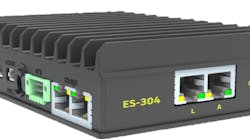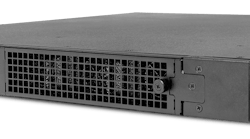School districts have seen digital learning taking off in classrooms, but all that time online comes bundled with a host of concerns for the safety and well-being of students. A Pew Research Center survey found that 59 percent of U.S. teens have personally experienced cyberbullying of some kind. Yet, cyberbullying is just one of the potential hazards kids face online where inappropriate web use and online exposure can also be a reoccurring issue.
By law, in the United States, schools must filter all internet traffic for inappropriate content or conduct. With the multitude of choices available on the market, how should IT teams determine which safety and filter solutions are best for their schools?
Although all stakeholders offer important perspectives, IT professionals have a unique set of concerns when evaluating new technology solutions for their schools and districts. While administrators, teachers, and parents are interested in supporting digital citizenship and protecting students from digital dangers, the IT professional is often focused on these things in conjunction with more technical considerations like agility and scalability. There are a variety of solutions to choose from, but how do IT professionals determine which tool is the right fit?To select the right solution and guarantee success, IT professionals should consider the following six factors to assess safety and filter solutions for schools.
1. Reliability and performance
Reliability is at the heart of any decision about network filtering systems. Without a reliable solution, many unwanted threats can go unchecked. The average person does not notice performance until the system stops performing well. That is when IT parameters such as latency and availability suddenly become important to other stakeholders.
IT professionals are looking for a well-tested, trusted system consisting of large and evolving databases that organize content into several categories of threats. Explicit content and violence are necessary categories, but the databases should also include other potentially hazardous content like smoking, drug use, and self-harm references. In addition, real-time analysis of the content itself, like content scanning, character recognition, and keyword detection, is required for the system to reliably protect students from digital dangers.
Monitoring and filtering threats is a constantly moving target. Students learn to evade filters and can change their language to mask its meaning. For this reason, AI-driven filtering solutions are essential because they allow the system to evolve and adapt to ever-changing threats. A robust solution will also filter content in multiple languages to support global users and diverse student populations.
2. Implementation and scalability
To successfully implement a comprehensive content filter and digital safety solution, IT professionals are looking for systems that can be deployed across different hosting options, easily fit into existing enterprise and network configurations, and allow for easy client set-up. Additionally, compatibility with multiple operating systems, including Mac, Windows, and Chromebook devices, as well as the ability to function on both school and remote networks simplifies implementation for both staff and students.
While IT teams may or may not expect their school districts to grow, the use of the Internet for teaching will likely increase, potentially burdening networks and the filtering system. Demand can increase resource usage, reducing performance and costing more money. For this reason, IT teams are looking for solutions that can easily scale when needed.
3. Data privacy and compliance
Protecting student data privacy is a critical part of every IT professional’s job. Solutions must be evaluated to safeguard student data at all levels to build confidence and trust in school technology programs.
Another part of an IT team’s responsibility when implementing a new solution is to verify that it is compliant with federal regulations like the Children’s Internet Protection Act (CIPA), Children’s Online Privacy Protection Rule (COPPA), as well as other standards like those in place by the Internet Watch Foundation (IWF) and Friendly WiFi. These and other compliance requirements not only protect students, but they are necessary for schools to qualify for certain grants and other federal funding, making it incredibly important from a budgeting standpoint as well.
4. User needs
One of the most valuable contributions IT brings to a purchase decision is how a system can meet the diverse needs of a variety of stakeholders. For example, the filtering needs in an elementary school classroom will not match the filtering requirements in a high school classroom. Furthermore, many districts will require multiple instances of a filtering solution but want to retain some centralized authority over all these instances.
Therefore, filtering solutions need the ability to allow for distributed management and fine-tuning of categorization rules. Administrators will still want some or all the filtering rules to be centralized, even if a school district has multiple instances of the filtering system. The system should also allow filtering rules to have a wide range of options (such as filtering on categories, URLs, keywords, and types of web applications) to block or allow access for specific groups or users.
5. Reporting
While much of a filtering system is automated, value lies in the actionable intelligence it can provide to administrators and teachers. If reporting is too difficult to obtain or not easy to understand, it can limit the amount and effectiveness of early intervention.
Administrators need to know how to access reports in the system, including options for viewing raw data and the ability to customize reports to show the information they’re most concerned about. Reporting should include the ability to see what websites are most accessed and blocked as well as commonly blocked search terms.
6. Customer service
The provider’s reputation and customer service should be top of mind for IT professionals when researching a safety and filtering solution. This is not only important for troubleshooting and resolving everyday issues, but also during the implementation and deployment process.
When systematic issues arise, it is crucial to have direct access to a support team dedicated to quickly assessing and resolving those issues. Options for contacting support teams should include phone, email, and live chat as well as a user knowledge base to address common issues and frequently asked questions. Ultimately, administrators and users want to know that they have a reliable and trusted partner at their side.
When it comes to education, rarely is there a one-size-fits-all solution, but by considering these factors, IT professionals will be better equipped to select a solution that makes the most sense for their school and students.







